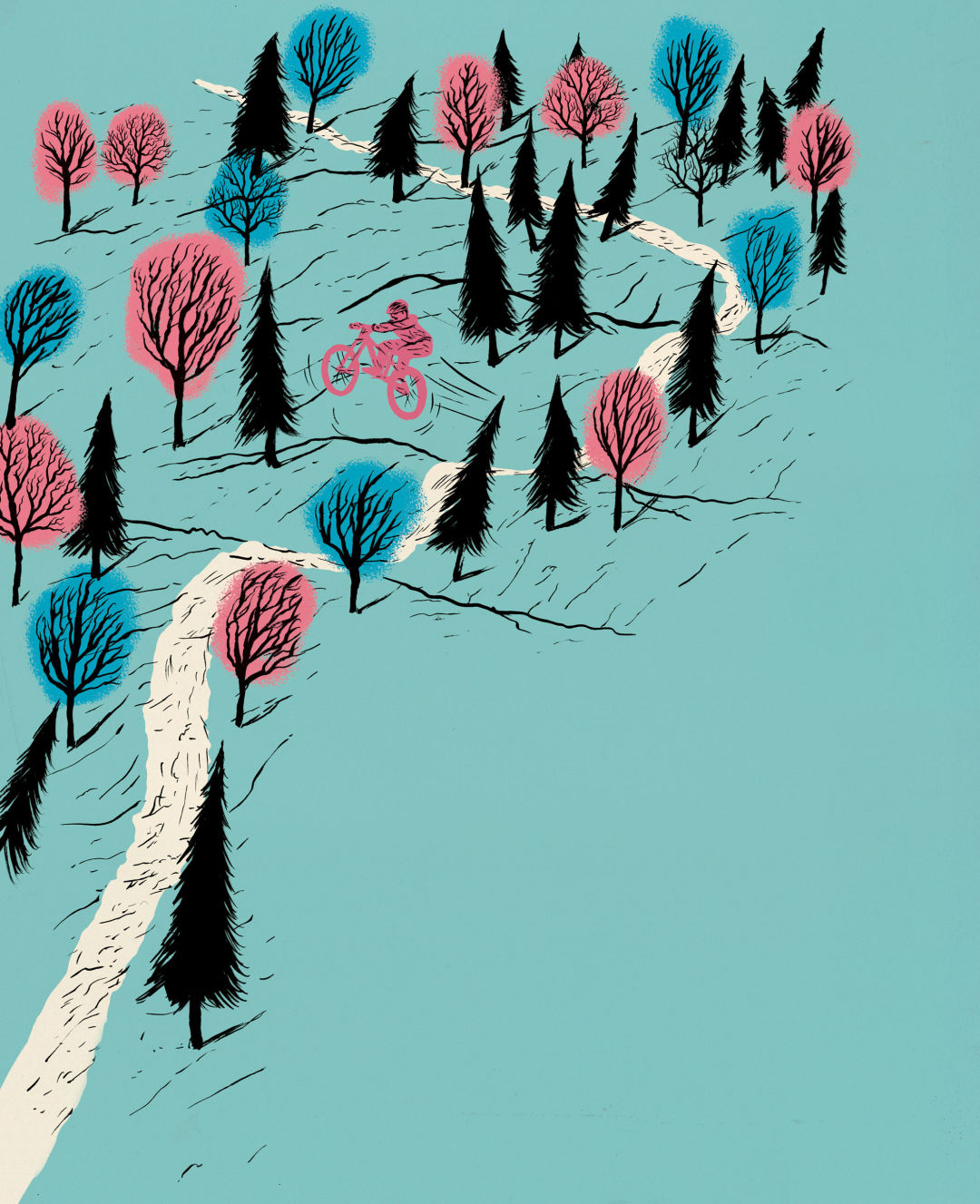Using Your Head

Image: Paul Blow
Head spinning and slack-jawed, I stared at the shattered helmet cradled in my hands.
Seconds earlier I had watched the rider ahead of me on the Mid Mountain Trail catch air off a rise, clear two humps, gently touch down, and cruise around a wide bend. Like hopping a homemade sidewalk ramp, I thought. No problem.
But my misguided downhill strategy soon had me literally “over my head” as a stew of nerves, poor technique, and insufficient velocity lifted me past the first hump and placed my front tire squarely ahead of the apex of the second. The impact bottomed out my fork. I sprang forward, toes to the sky, and landed like a leaden shuttlecock directly on my head. With a crack, lightning flashed behind my closed eyes, and I rag-dolled into the weeds on the downhill side of the trail.
I lay prone, taking stock of my injuries, and, swallowing panic, I sucked tiny, stolen breaths into empty lungs. My aching head was foggy and my neck hurt, but I was able to move. I rose to my feet as my breathing slowly returned to normal and reached up to remove my helmet. A spastic web of cracks perforated its foam guts. Believing that my life—at least its quality—had been spared by 10 ounces of polystyrene, I hobbled back up to the trail to collect my bike and broken pride.
A bicycle helmet’s obvious purpose is to protect the head, especially from traumatic brain injury (TBI), which occurs when the brain forcefully impacts the inside of the skull or is penetrated by another object. And most of the time, helmets do the job: the Centers for Disease Control and Prevention estimates that wearing a bicycle helmet reduces the risk of head injury by about 80 percent. But the insurance helmets provide clearly doesn’t eliminate all risk. In fact, the most common type of TBI—concussion—is also the one least preventable by donning a helmet.
Angela Eastvold, PhD, is a clinical neuropsychologist and TBI expert who performs concussion assessments for Major League Soccer’s Real Salt Lake. She explains that while helmets can reduce TBI severity, they can’t actually prevent a concussion. “You can bubble-wrap yourself, but you can’t prevent a concussion if there’s a forceful impact that causes your brain to impact your skull,” Eastvold says.
It’s not hard to figure out which kind of riding—cross-country versus the newly popularized downhill or freeriding—elicits the most head injuries. Data specific to the sport’s effects on TBI frequency are difficult to come by because most people who suffer concussions do not seek medical care. But according to a 2008 British metastudy, cross-country mountain biking resulted in .37 injuries per 100 hours of riding. For downhillers, that number jumped to 4.3.
Another study, published in the British Journal of Sports Medicine in 2013, followed downhill mountain bikers in Whistler, British Columbia—largely considered North America’s premier downhill/freeride area—during the summer of 2011. Of 249 riders, 494 injuries were reported, including 51 total head injuries, accounting for roughly 10 percent of the total injuries.
While these numbers may seem relatively small, the long-term effects of suffering a TBI typically are not. A 2013 study of Montreal Canadiens hockey team members revealed that even after the immediate symptoms of a concussion—confusion, nausea, headache, disturbed sleep, and minor amnesia—have subsided, abnormal brain activity can persist for years, leading to attention problems and dementia.
So the real issue is not whether you should wear a helmet when you get on a bike—any 5-year-old knows the answer to that question. It’s about making decisions. It scares me to think about what could’ve been that day I wiped out on the Mid Mountain Trail. Had I hit just a little harder, or at a slightly different angle, I might have been flown off the mountain unconscious and facing months of rehab or worse, rather than riding off the mountain the way I did. All because I wanted to do what a more experienced rider had done before me. Now I realize that no amount of polystyrene can protect us from the biggest danger out there: our own bad judgment.



































